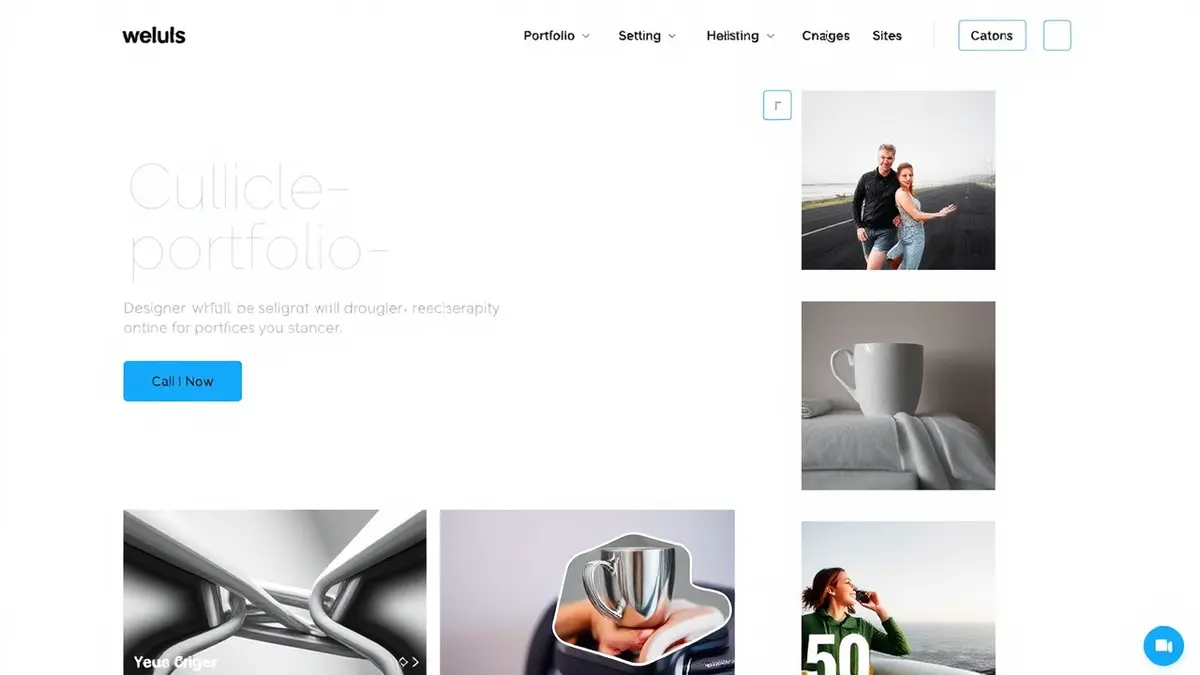
Portfolio Website Tips for Designers
Crafting the Perfect Portfolio Website: Essential Tips for Designers
As a designer, your portfolio website is more than just a collection of your work; it's your digital handshake, your resume, and your strongest advocate, all rolled into one. It's the first impression you make on potential clients and employers, and it needs to be impactful. With so many designers vying for attention, how can you ensure your portfolio stands out from the crowd? Let's dive into some essential portfolio website tips for designers that will help you showcase your talent and attract the right opportunities.
Showcasing Your Best Work
The key to a successful portfolio is quality over quantity. Resist the urge to include every project you've ever worked on. Instead, curate a selection of your absolute best work that demonstrates your skills, style, and range.
- Highlight relevant projects: Focus on projects that align with the type of work you want to attract. For example, if you specialize in UI/UX design for mobile apps, showcase your most impressive app designs.
- Provide context: Don't just show the final product. Explain the problem you were trying to solve, your design process, and the results you achieved.
- Use high-quality visuals: Ensure your images and videos are professionally presented and optimized for the web. Nobody wants to wait for a blurry image to load.
Storytelling Through Your Portfolio
Your portfolio should tell a story about your design journey. Think of each project as a chapter in that story.
- Start strong: Feature your most captivating project first to immediately grab the viewer's attention.
- Showcase variety: Include a mix of different project types and styles to demonstrate your versatility.
- End with a bang: Leave a lasting impression by finishing with another standout project.
Optimizing for User Experience
A visually stunning portfolio is useless if it's difficult to navigate. Prioritize user experience to ensure visitors can easily find what they're looking for.
- Keep it simple: Use a clean and intuitive layout that is easy to understand. Avoid clutter and unnecessary distractions.
- Make it responsive: Ensure your website looks great on all devices, from desktops to smartphones.
- Improve page speed: Optimize images and code to ensure your website loads quickly. Slow loading times can drive visitors away.
The Importance of Clear Navigation
Clear and concise navigation is crucial for a positive user experience.
- Use clear labels: Ensure your menu items are easy to understand and accurately reflect the content of each page.
- Implement a search function: Allow visitors to easily search for specific projects or keywords.
- Include a contact page: Make it easy for potential clients to get in touch with you.
Crafting a Compelling "About Me" Section
Your "About Me" section is your opportunity to connect with visitors on a personal level. Share your story, your passions, and your unique selling points.
- Write a compelling bio: Highlight your skills, experience, and design philosophy.
- Include a professional headshot: A friendly face can help build trust and rapport.
- Showcase your personality: Let your personality shine through in your writing style and design choices.
Showcasing Your Product Design Expertise
Make sure your "About Me" section clearly communicates your areas of expertise. If you specialize in product design, highlight your experience, skills, and accomplishments in this area.
Driving Traffic and Generating Leads
Creating a beautiful portfolio is only half the battle. You also need to drive traffic to your website and convert visitors into leads.
- Optimize for search engines (SEO): Use relevant keywords throughout your website to improve your search engine rankings.
- Promote your portfolio on social media: Share your projects and engage with your audience on social media platforms.
- Include a call to action: Encourage visitors to contact you for work or to learn more about your services.
Boosting Your SEO with Relevant Keywords
Using relevant keywords, like "product design," throughout your website content can significantly improve your search engine rankings. This will help more potential clients find your portfolio.
Conclusion
Creating a successful portfolio website is an ongoing process. By following these portfolio website tips for designers, you can create a compelling online presence that showcases your talent, attracts the right opportunities, and helps you achieve your career goals. Remember to constantly review and update your portfolio to reflect your latest work and skills. Good luck!
FAQs
Q: How many projects should I include in my portfolio?
A: Quality over quantity is key. Aim for 5-10 of your best and most relevant projects.
Q: Should I include testimonials on my portfolio website?
A: Yes! Testimonials from satisfied clients can add credibility and build trust.
Q: How often should I update my portfolio website?
A: Regularly! Aim to update your portfolio with new projects at least every few months.
Q: What if I don't have any client projects to showcase?
A: Create personal projects or contribute to open-source projects to build your portfolio.


